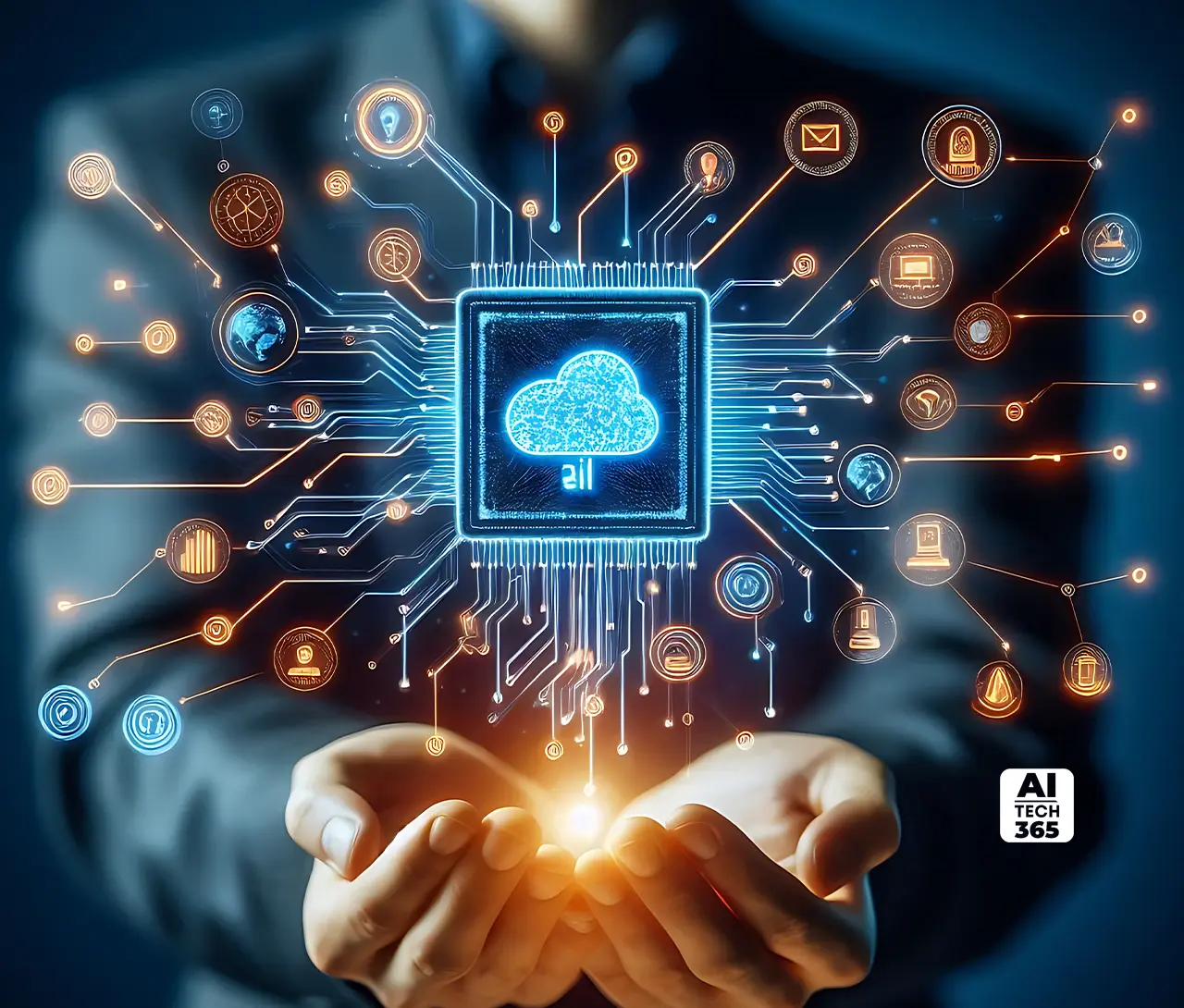Every enterprise chasing AI transformation eventually hits the same question: where should the intelligence live? On the cloud, where scale and computing power seem infinite, or at the edge, where real-time decisions can actually happen? It’s not a simple technology debate. It’s a strategic one that defines how efficiently data turns into value.
The truth is, the smart choice isn’t ‘cloud AI vs edge AI.’ It’s about when and where each delivers the most impact. Cloud AI excels at massive data processing, model training, and global coordination. Edge AI shines in moments that demand instant action, privacy, or autonomy. The deciding factors are business fundamentals like latency tolerance, data volume, and how capital is structured.
This isn’t just a technical architecture decision. It’s a financial and operational trade-off that will separate companies merely using AI from those truly built around it
Cloud AI powering the new era of big data and training
Let’s call it what it is. Cloud AI is the muscle behind modern intelligence. It’s where data grows up and learns to think. Instead of running on local machines, it thrives on massive infrastructures like AWS, Azure, and Google Cloud. When businesses train deep learning or generative models, this is their playground. They get near-infinite compute power, scale on demand, and a cost model that trades heavy upfront investment for flexible pay-as-you-go control.
The biggest advantage of Cloud AI is how easily it stretches. Need to process petabytes of data? No problem. Want to run global analytics or simulate entire systems? The cloud scales in seconds. AWS proved the pace of this growth with its 2025 update, training over two million people worldwide in generative AI through its AI Ready initiative. That’s not just technology scaling, it’s human capability expanding alongside it.
But even power comes with limits. Moving massive datasets takes time, and network delays can break the rhythm of real-time work. Payments for bandwidth continue to rise. Heavily regulated sectors such as the banking or medical still struggle with determining the location of data and its supervision.
Nonetheless, Cloud AI is still the optimum area for developing, enhancing, and scaling intelligence prior to the edge location. It’s the laboratory where models evolve before taking action in the real world. When you look at Cloud AI vs Edge AI, it isn’t a rivalry; it’s choreography. Cloud AI teaches. Edge AI executes. The smartest enterprises know that real advantage comes from getting this dance right.
Edge AI driving the future of real-time intelligence and privacy
If Cloud AI builds the brains, Edge AI brings them to the frontlines. It runs trained models right where data is born, inside machines, cameras, and sensors that react in milliseconds. This is where decision-making stops being theoretical and starts being practical. For industries where a split second can save money or lives, that speed changes the game completely.
The real power of Edge AI is independence. It doesn’t wait for a cloud server to respond. It doesn’t freeze when the network drops. The machine continues to operate, assess and make decisions. The data does not leave its place of generation, which not only ensures the confidentiality of the data but also makes it easier for certain industries, such as finance, healthcare, or defense, to meet regulatory requirements. Companies are also able to save on huge bandwidth costs because only the summaries or the refined insights are sent to the cloud. That means faster systems, lower costs, and tighter security all at once.
Intel’s 2025 report makes the direction clear. At the conclusion of this year, enterprises will store 50% of their data outside the traditional data centers, in real-time locations like factories, stores, and hospitals. This should not be viewed as a trend but rather a new way of distributing intelligence. The Action draws the center of gravity nearer to it.
Still, Edge AI isn’t a miracle box. It can’t train large models and depends on the limits of its chips. Managing thousands of devices is messy and capital-heavy. But for real-time control, monitoring, and safety-critical environments, it’s unmatched.
Cloud AI might be the brain that learns, but Edge AI is the reflex that acts. Together, they define how modern enterprises stay smart, fast, and alive in the real world.
Also Read: Cloud AI Infrastructure 101: Building Scalable and Secure AI Systems
The Strategic Investment Matrix guiding AI trade-offs
Every enterprise hits the same fork in the road at some point. Do you put your chips on Cloud AI for scale, or on Edge AI for speed? The answer isn’t binary. It’s about matching technology to context. When the stakes are high, guessing wrong costs more than waiting does.
Start with how data moves. Cloud AI processes information in large, centralized batches. Edge AI handles it as live streams, acting on each moment as it happens. So the first question is simple: does your business win from collective big data or individual real-time events?
Latency is another non-negotiable. Cloud depends on networks, which means delays. Edge responds in milliseconds, making it indispensable for automation, safety, and control systems.
Money matters too. Cloud AI runs on an OPEX model with predictable subscriptions. Edge AI often demands upfront CAPEX for hardware and device management. Finance teams need to align investment models with deployment strategy, not the other way around.
Complexity also divides the two. Cloud handles training large, demanding models like LLMs. Edge runs lighter inference models optimized for fast execution. Privacy, finally, is where Edge quietly wins; data stays local, ideal for regulated sectors like healthcare or banking.
Microsoft’s 2025 AI Decision Brief nailed it: the top performers capture nearly four times more value from their AI investments than beginners. The pattern is clear. Smarter allocation, not bigger budgets, separates leaders from laggards.
Real-world case studies showing where AI delivers maximum value
The easiest way to see the Cloud AI vs Edge AI debate in action is to follow the money. Look at where each model creates real, measurable value. The patterns are clear when you move beyond the hype and into actual performance.
Cloud AI at its best: Large-scale predictive analytics in logistics
Imagine a global logistics network that moves millions of shipments every day. The variables are endless; weather, traffic, warehouse capacity, customs checks. Cloud AI thrives here because it can process billions of data points from GPS sensors, warehouse scans, and customer systems. Using Google Cloud’s BigQuery and Vertex AI, the company builds a digital twin of its entire supply chain, running large simulations to predict bottlenecks before they happen.
The value is strategic, not real-time. It improves prediction accuracy, reduces downtime, and reshapes how decisions are made across regions. Google’s Enterprise Reference Architectures even supports clusters that scale from 4 nodes to 128 nodes with 1024 GPUs for massive AI training and inference. That kind of muscle is what makes Cloud AI the powerhouse for deep data analysis and long-term optimization.
Edge AI at its best: Real-time safety and quality control in manufacturing
Now shift to the factory floor. Here, milliseconds matter. A camera running Edge AI can detect a micro-defect or a safety risk the moment it appears. The system reacts instantly, stopping the conveyor belt or alerting staff before damage spreads. All of it happens locally, without sending any data to the cloud.
This setup doesn’t just prevent losses; it builds operational trust. Even if the internet cuts out, production doesn’t. The data stays private, bandwidth costs stay low, and every second saved translates into higher yield and worker safety.
In short, Cloud AI delivers the scale that drives intelligence across the enterprise. Edge AI delivers the precision that keeps it alive on the ground. Both are essential. The only question is where your business gains the most leverage.
The Hybrid AI Future
The real answer to the Cloud AI vs Edge AI debate isn’t either-or. It’s both, working in rhythm. Cloud AI provides a platform for training models, conducting massive computing activities, and collecting intelligence in a single place. On the other hand, Edge AI lives in the environment where speed, privacy, and autonomy determine the results. The combination of both is equal to the nervous system of the contemporary business. The cloud as the brain, the edge as the reflex.
Dell’s 2025 ‘AI Factory with NVIDIA’ shows where this is heading. Their platform blends compute, storage, and security across desktops and data centers, proving that hybrid is not a trend but an architecture for scale.
Enterprises ready to compete at full speed should invest in Hybrid AI systems where edge devices act as intelligent data filters for the cloud. This design keeps operations real-time and insights global. The future winners will be those who don’t choose sides but build systems that think globally and act instantly.


